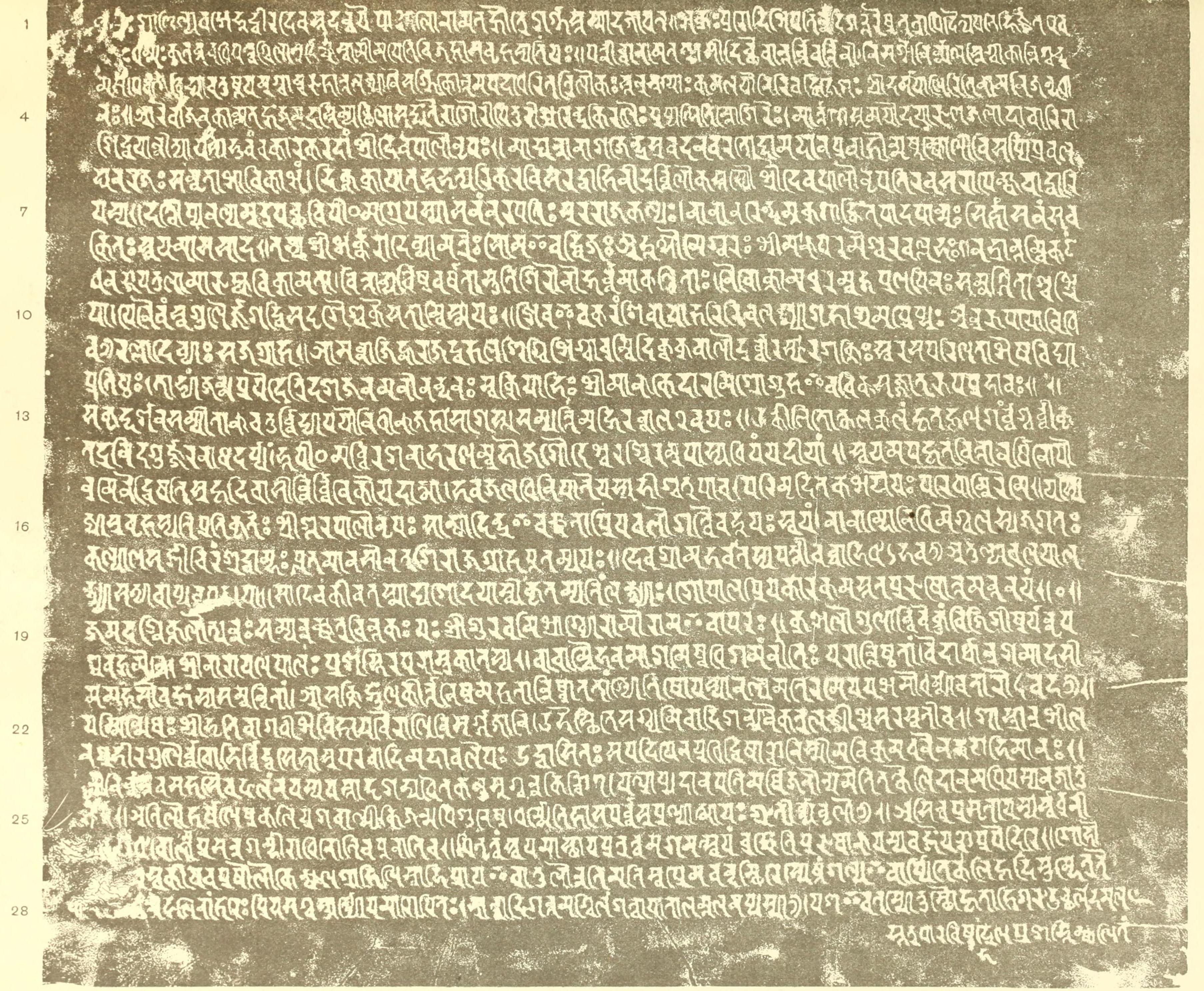Narayanapala on:
[Wikipedia]
[Google]
[Amazon]
Narayanapala (871–925 CE) was the seventh emperor of the
 He was the son of Vigrahapala I by his wife, the Kalachuri princess Lajjadevi, who is identified by O.P. Verma as being the probable daughter of Kokalla I. Naryanapala was later succeeded by his son Rajyapala.
He was the son of Vigrahapala I by his wife, the Kalachuri princess Lajjadevi, who is identified by O.P. Verma as being the probable daughter of Kokalla I. Naryanapala was later succeeded by his son Rajyapala.
Pala Empire
The Pāla Empire was the empire ruled by the Pala dynasty, ("protector" in Sanskrit) a medieval Indian dynasty which ruled the kingdom of Gauda Kingdom, Gauda. The empire was founded with the election of Gopala, Gopāla by the chiefs of Kingdo ...
of the Eastern regions of the Indian subcontinent
The Indian subcontinent is a physiographic region of Asia below the Himalayas which projects into the Indian Ocean between the Bay of Bengal to the east and the Arabian Sea to the west. It is now divided between Bangladesh, India, and Pakista ...
, mainly the Bengal
Bengal ( ) is a Historical geography, historical geographical, ethnolinguistic and cultural term referring to a region in the Eastern South Asia, eastern part of the Indian subcontinent at the apex of the Bay of Bengal. The region of Benga ...
and Bihar
Bihar ( ) is a states and union territories of India, state in Eastern India. It is the list of states and union territories of India by population, second largest state by population, the List of states and union territories of India by are ...
regions.
Reign
The Gaya temple inscription dated in his 7th regnal year, the Indian Museum (found in the erstwhile Patna district) stone inscription dated in his 9th regnal year, the Bhagalpur copper-plate grant dated in his 17th regnal year, Bihar votive image inscription dated in his 54th regnal year and the Badal pillar inscription of his minister Bhatta Guravamishra provide information about his reign. Based on the different interpretations of the various epigraphs and historical records, the different historians estimate Narayanapala's reign as follows: He was the son of Vigrahapala I by his wife, the Kalachuri princess Lajjadevi, who is identified by O.P. Verma as being the probable daughter of Kokalla I. Naryanapala was later succeeded by his son Rajyapala.
He was the son of Vigrahapala I by his wife, the Kalachuri princess Lajjadevi, who is identified by O.P. Verma as being the probable daughter of Kokalla I. Naryanapala was later succeeded by his son Rajyapala.
Religion and Religious Policy
Before thePāla Dynasty
The Pāla Empire was the empire ruled by the Pala dynasty, ("protector" in Sanskrit) a medieval Indian dynasty which ruled the kingdom of Gauda Kingdom, Gauda. The empire was founded with the election of Gopala, Gopāla by the chiefs of Kingdo ...
, Shaivism
Shaivism (, , ) is one of the major Hindu denominations, Hindu traditions, which worships Shiva as the Para Brahman, supreme being. It is the Hinduism#Demographics, second-largest Hindu sect after Vaishnavism, constituting about 385 million H ...
struck roots in Bengal
Bengal ( ) is a Historical geography, historical geographical, ethnolinguistic and cultural term referring to a region in the Eastern South Asia, eastern part of the Indian subcontinent at the apex of the Bay of Bengal. The region of Benga ...
, but it was during that dynasty that Brahmaņa ministers enhanced their influence and established Hinduism
Hinduism () is an Hypernymy and hyponymy, umbrella term for a range of Indian religions, Indian List of religions and spiritual traditions#Indian religions, religious and spiritual traditions (Sampradaya, ''sampradaya''s) that are unified ...
over Buddhism
Buddhism, also known as Buddhadharma and Dharmavinaya, is an Indian religion and List of philosophies, philosophical tradition based on Pre-sectarian Buddhism, teachings attributed to the Buddha, a wandering teacher who lived in the 6th or ...
. Especially during the reign of Narayanapala, Shaivism
Shaivism (, , ) is one of the major Hindu denominations, Hindu traditions, which worships Shiva as the Para Brahman, supreme being. It is the Hinduism#Demographics, second-largest Hindu sect after Vaishnavism, constituting about 385 million H ...
gained an extensive hold upon the minds of people of Bengal
Bengal ( ) is a Historical geography, historical geographical, ethnolinguistic and cultural term referring to a region in the Eastern South Asia, eastern part of the Indian subcontinent at the apex of the Bay of Bengal. The region of Benga ...
. Buddhism's prevalence in the region reduced, gradually becoming blended with Shaivism
Shaivism (, , ) is one of the major Hindu denominations, Hindu traditions, which worships Shiva as the Para Brahman, supreme being. It is the Hinduism#Demographics, second-largest Hindu sect after Vaishnavism, constituting about 385 million H ...
.
See also
*List of rulers of Bengal
This is a list of rulers of Bengal. For much of History of Bengal, its history, Bengal was split up into several independent kingdoms, completely unifying only several times. In Kingdoms of Ancient India, ancient times, Bengal consisted of the ...
References
External links
* {{s-end Pala emperors 871 births 925 deaths 10th-century Indian monarchs 9th-century Indian monarchs